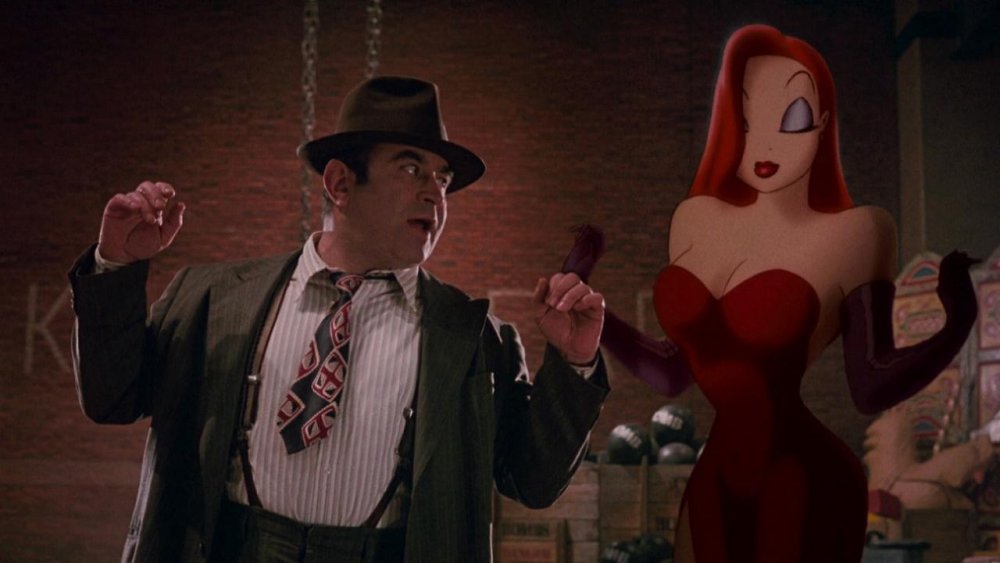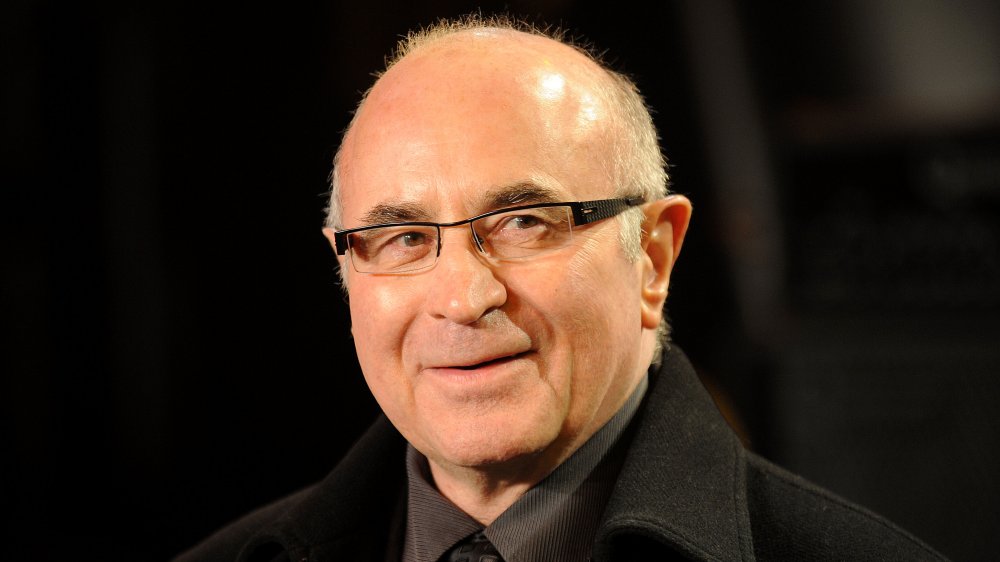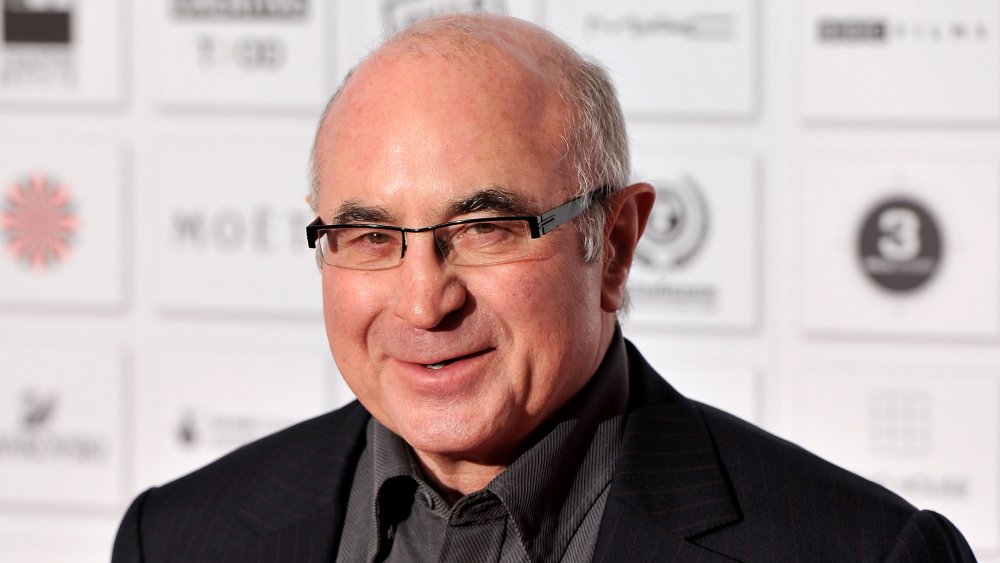Why Bob Hoskins Was Never The Same After Who Framed Roger Rabbit
Who Framed Roger Rabbit is recognized as an incredible technological achievement in the age before digital VFX for melding traditional animation atop the real world, having flesh-and-blood actors interact with animated two-dimensional characters in a goofy alternate universe where cartoons live amongst us in everyday life. It's also a cinematic masterpiece in its devotion to detail — ensuring that each point the two-dimensional characters touch in the three-dimensional world leave traces of their existence in the form of fingerprints, jostled furniture, and being affected by the lighting around them.
At the heart of Who Framed Roger Rabbit sits Bob Hoskins, who portrays Eddie Valiant — the private detective attempting to exonerate the titular Roger Rabbit who has been wrongly accused of murder, despite his baggage attached to Toons after his brother was killed years before by one of them. Hoskins wasn't the first choice to play Eddie Valiant – other, more well-known comedic actors passed over the part before him — but the legacy he and the film itself have left in Hollywood has us believing Hoskins was the only man truly meant for the role. His expert blend of comedic timing and real dramatic gravitas is the anchor point on which the entire movie turns; because Hoskins absolutely believes he's really picking up Roger by his ears and swinging him around, we all do, too.
The fact of the matter is that Hoskins' work in Who Framed Roger Rabbit changed cinema — and the actor's personal life — forever. Here's why Bob Hoskins was never the same after Who Framed Roger Rabbit.
Living through method acting a bit too thoroughly
The complicated method by which Who Framed Roger Rabbit presented the animated and the real-world together on screen required almost two years of work, stretched the boundaries of physical film technology, and demanded much of its actors. Being the lead and the one who performed the most interaction with the animated characters, Bob Hoskins bore the greatest of these demands.
The live-action footage of Who Framed Roger Rabbit was shot first, since director Robert Zemeckis insisted it be captured like any other live-action production — with dynamic camera movement and lighting rather than the static framing and one-dimensional lighting often seen in animated films for the sake of simplicity and cost reduction. This meant that Hoskins had to perform all his scenes opposite nothing — rubber mock-up puppets were used for rehearsing and blocking scenes, but cameras started rolling, he was almost completely on his own. (Charles Fleischer was standing off-set feeding him Roger Rabbit's dialogue while wearing a full-size Roger Rabbit costume he insisted be made for him to help get into character. It was a weird and wild production, guys.)
During a time before CGI, green screens, and wire-strung tennis balls were ubiquitous when mixing live-action with animation, this demand was extremely unique. To properly prepare for the undertaking, Hoskins spent a lot of time playing with his daughter. She was very young in the late '80s (Who Framed Roger Rabbit began filming in November 1986) and had an invisible friend named Jeffrey. As Hoskins played with her and observed how she crafted this imaginary pal, he learnt how to "hallucinate."
Hoskins went into filming with this honed skill and used it at will. The behind-the-scenes documentary The Making of Who Framed Roger Rabbit features several crew members remarking on Hoskins' incredible ability to follow sightlines correctly, focus his sight on empty points in space, and nail exactly how the planned orchestration of picking up and touching the animated characters in take after take without fail. And if we're to believe Hoskins outright, he really did see them there, and was, in his own mind, truly interacting with them.
Once filming on Who Framed Roger Rabbit concluded, trouble came. Hoskins has said he was able to maintain control of the skill he'd given himself for some time, but after eight months of filming, that control began to degrade. He eventually began seeing cartoon rabbits and weasels everywhere for many months after Who Framed Roger Rabbit wrapped shooting. Hoskins revealed to The Express back in 2009, "I think I went a bit mad doing that. Lost my mind ... The trouble was, I learnt how to hallucinate. You do that for eight months it becomes hard to get rid of. I went to this one do where I got talking to a very country lady with a big hat and there was this weasel in her hat."
Funny as that sounds, it has to be quite terrifying to live through. Doctors told him to take just a few months off, but Hoskins decided not to work again for an entire year after Who Framed Roger Rabbit; those releases after his return to working were Heart Condition and Mermaids in 1990. As the years went by, Hoskins noted that he didn't want to step back into Eddie Valiant's shoes, which is just one of the many reasons why Who Framed Roger Rabbit never got a sequel.
Bob Hoskins' legacy lives on thanks to Who Framed Roger Rabbit
Hoskins' situation is one of the most unique ways for a film to leave an imprint on one's life, but in the years following, he recalled it good cheer and remembered the film as one of his favorites in his career (unlike the flick he's more ignobly known, Super Mario Brothers, which he has referred to as "a f******' nightmare"). His legacy in Who Framed Roger Rabbit marks Hoskins as a genius and the forerunner of the kind of modern acting that we take for granted today.
Who Framed Roger Rabbit changed Hoskins' life so profoundly, it even defined him in death — with every article announcing his death in 2014 referring directly to his role as Eddie Valiant. It's a great legacy to have, because at the end of it, he received the same glorious compliment the eyebrow-raising character Jessica Rabbit gave her husband in the movie: he made us laugh.


